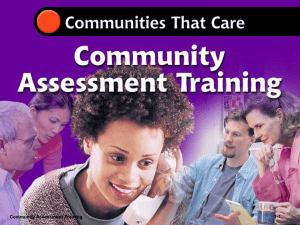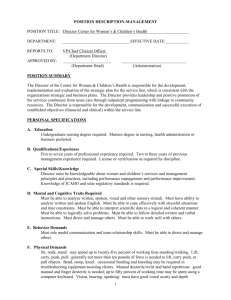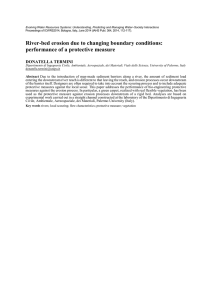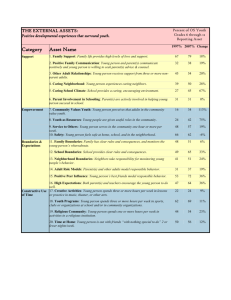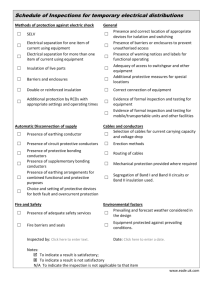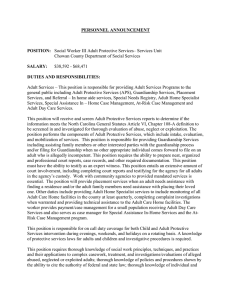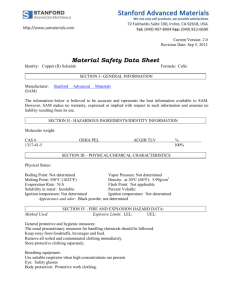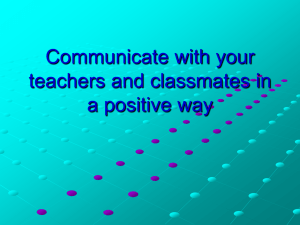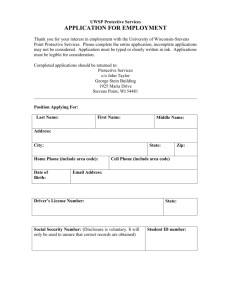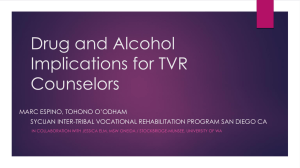Protective Practices - Department for Education and Child
advertisement
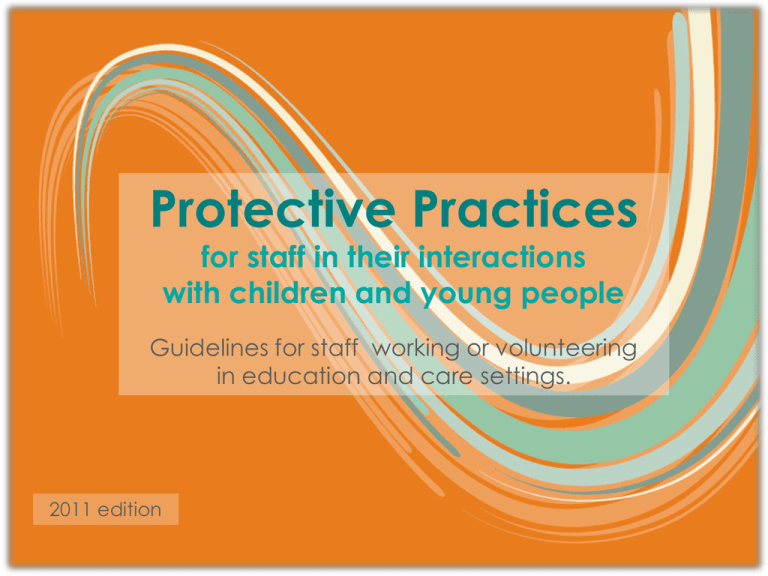
Protective Practices for staff in their interactions with children and young people Guidelines for staff working or volunteering in education and care settings. 2011 edition These guidelines were developed to: o safeguard the emotional and physical wellbeing of children & young people in education & care settings o provide clear advice to adults to assist them to feel comfortable, clear and confident about the professional boundaries of their interactions with children & young people foreword They apply to government and non-government sites. “no touching!” Teachers lose their caring touch New IT stock stalls Despite media hype, the guidelines DO NOT PROHIBIT CHILDREN BEING TOUCHED They describe respectful ways of providing caring, encouraging and instructive touch. p 16 In your practice what are situations where you may touch a child/young person? How does this fit with the good practice recommendations? Are there alternatives? How do you/might you ensure this touch is experienced as respectful? Professional Boundaries 1 • communication 2 • personal disclosure 2 • physical contact 3 • place 1 • targeting individual child/young person 2 • role 3 • possessions In a group of three, each person read and share with the other two, the sections of the table as above. Concentrate on examples which are particularly relevant to your setting. p 8-9 Further to • personal disclosure Getting to know people usually involves some information about yourself but professional boundaries prevent harm to child or young person, undermining of learning &/or harm to your professional reputation. What and how might you disclose about yourself to children/young people while being protective of them and yourself? Further to • place – for country & local communities Look at the guiding principles on p11. What are some of the challenges for you in this situation? Share strategies that you use to ensure you are able to enjoy your life in the community while still being protective of children, young people and yourself. p 11 Social Networking We are expected to model responsible & respectful conduct; consider the electronic social environment as part of this. p 11 • own information and images of self appropriate • do not have children/young people in your educational community as “friends” • no hurtful/ embarrassing /libellous/ reputationally harmful comments about child(ren)/ young person(s) or staff or workplace. “gain written permission from parents before publishing video, photographs, comments or work samples of their child” p11 Children and young people with additional needs or disabilities In many cases staff will need to engage more in physical contact to meet their duty of care and learning program requirements. The vulnerability of these children and young people requires even more vigilance and thoughtfulness. p 19 Outlining the requirements in the individual plan is protective of both the child or young persons and the adults who interact with him/her in care and education. When staff see concerning behaviour in other adults … Suspected Child Abuse Report to CARL irrespective of who is implicated as per RAN procedures p 14 behaviour which is inappropriate but not abusive through site leader individual made aware of potentially negative impact on child/young person and self; if it is disclosed by child/young person do not minimise, ignore or delay. When I as site leader am made aware of such a concern I am required to: • raise it with the adult referred to • explicitly outline conduct expectations • record the concern, outlined expectations, and any additional information/ explanation/ clarification; have this record signed and dated by the adult and me; and give a copy of this to the adult and securely and confidentially file the original. • inform parents if appropriate This is protective of all parties: • any children/young people put at risk or made uncomfortable by inappropriate (intentional or otherwise) conduct • the referring person who can be confident their concern has been checked out • the adult referred to as s/he has opportunity to respond, to clarify if referral not justified, to improve practice if unintentional, and to have the whole picture on record. A colleague comes to you concerned about a situation below. What more might you ask? What issues would you raise? a. While I was in the playground, a child fell over, burst into tears and came to me for comfort. I didn’t know what to do. b. I have just got an email inviting me to one of my senior student’s 18th birthday party. c. One of my middle school students has asked me to see them after school because they are very worried about something. d. My neighbour is a single parent who works shift work and s/he has asked me if I will give their child a lift in the mornings. e. One of the children in special education keeps asking me to help them in the toilet. f. Lee has fits of apparent rage and bangs his/her head on the table. I am worried s/he will be hurt. g. OR explore a situation specific to your experience. Follow-up • ensure you have read the guidelines • raise any questions or concerns about your practice, school routines or other situation with your line manager In conclusion

